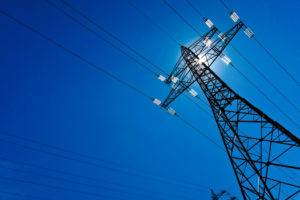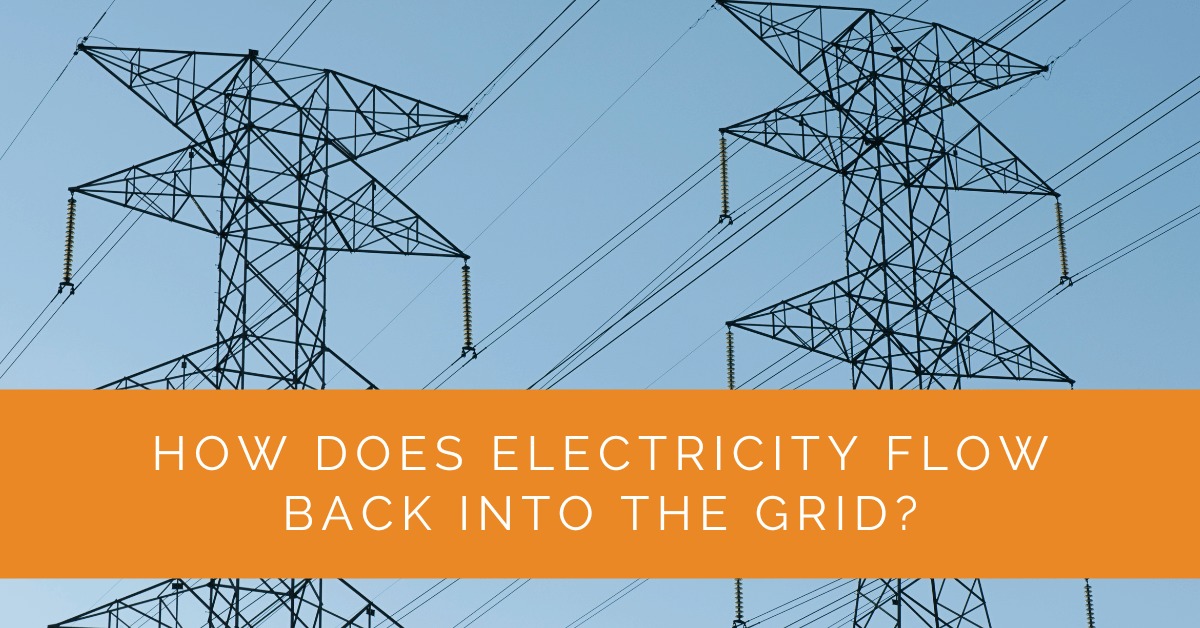Understanding how electricity flows back into the grid is essential for solar panel owners as solar power gains popularity. In this comprehensive article, we will delve into the intricacies of the two-way flow of electricity between solar panels and the grid. We will explore the process, benefits, and key components involved in sending excess solar energy back into the grid, empowering you with the knowledge to maximize the benefits of your solar system.
Contents
- 1 Key Takeaways
- 2 The Basics of Solar Panel Systems
- 3 Sending Excess Solar Power Back to the Grid
- 4 Advantages and Considerations
- 5 Case Study: Leveraging Solar Energy to Feed Electricity Back into the Grid
- 6 Expert Insights From Our Solar Panel Installers About Electricity Flowing Back into the Grid
- 7 Experience Solar Excellence with Us!
- 8 Conclusion
Key Takeaways
- Electricity flows back into the grid from solar panels through an inverter, which converts the direct current (DC) electricity generated by the panels into alternating current (AC) electricity compatible with the electrical grid.
- A bi-directional meter is installed to measure the flow of electricity in both directions accurately – from the grid to the solar panels and from the solar panels back to the grid. This allows utility companies to determine the amount of excess electricity supplied by the solar system and credit the owner accordingly.
- Sending excess electricity back into the grid offers benefits such as reducing electricity bills through net metering or earning credits through feed-in tariffs. It also promotes a more sustainable energy ecosystem by reducing reliance on fossil fuel-based power generation and actively involving individuals and communities in the renewable energy transition.
The Basics of Solar Panel Systems
How Do Solar Panels Generate Electricity?
Solar panels harness the power of sunlight to generate electricity through the photovoltaic (PV) process. Photons from sunlight strike the solar panels’ photovoltaic cells, creating a flow of electrons and generating direct current (DC) electricity. However, to use this electricity in homes and businesses and feed it back into the grid, it must be converted into alternating current (AC) electricity.
Understanding Net Metering
Net metering is crucial in facilitating the two-way flow of electricity between solar panels and the grid. When solar panels produce excess electricity, it is fed back into the grid, effectively spinning the meter backward. Net metering allows you to receive credits for the excess energy you supply to the grid, which can be used to offset the electricity you consume from the grid during times when your solar system doesn’t generate enough power.
Sending Excess Solar Power Back to the Grid
Working of the Inverter
The inverter is a crucial component in a solar panel system responsible for converting the solar panels’ direct current (DC) electricity generated into alternating current (AC) electricity compatible with the electrical grid and household appliances. It performs multiple functions to ensure seamless integration with the grid. Firstly, it adjusts the voltage of the electricity to match the grid’s voltage level. Secondly, it synchronizes the frequency of the AC electricity with the grid’s frequency, typically 50 or 60 Hz. This synchronization is vital for the safe and efficient operation of the entire electrical system.
Operation of the Bi-Directional Meter
A bi-directional meter is installed to accurately measure the flow of electricity between your solar system and the grid. This specialized meter records the electricity consumed from the grid, and the surplus energy returned to the grid. It measures the net energy flow, the difference between the energy you consume from the grid and the excess energy your solar system feeds back into the grid. By precisely measuring both directions of electricity flow, the bi-directional meter enables utility companies to determine the amount of excess electricity you provide to the grid and credit you accordingly.

Billing and Crediting for Excess Electricity
When you return excess electricity to the grid, utility companies credit your account for the surplus energy you supply. These credits can offset the electricity you consume from the grid when your solar system doesn’t generate enough power, such as at night or during cloudy days. The precise billing and crediting processes may vary depending on your location and the policies of the utility company. Some utilities offer net metering programs, where the excess electricity you provide to the grid is subtracted from your total electricity consumption, resulting in lower or even zero electricity bills. Other programs may offer feed-in tariffs, where you are paid a predetermined rate for each kilowatt-hour excess electricity you feed back into the grid. It is important to familiarize yourself with your utility company’s specific policies and regulations to understand how you will be credited for your excess solar power.
By efficiently sending excess electricity back into the grid, solar panel owners can reduce their electricity bills, contribute to the overall energy supply, and promote a more sustainable energy ecosystem. The ability to generate clean and renewable energy and feed it back into the grid reduces the reliance on fossil fuel-based power generation. It helps mitigate the environmental impact of traditional energy sources. Moreover, the two-way flow of electricity empowers individuals and communities to participate in the renewable energy transition actively, becoming key contributors to a greener future.
Advantages and Considerations
Advantages of Sending Electricity Back to the Grid
Sending electricity back to the grid offers numerous benefits. Firstly, it reduces your electricity bill, as the excess energy you supply offsets your consumption from the grid. Additionally, feeding clean solar energy back into the grid contributes to a more sustainable energy mix and helps reduce reliance on fossil fuel-based power generation. It also allows you to actively participate in the renewable energy transition actively, supporting a greener future.
Considerations for Grid Connection
Compliance with local regulations and utility requirements is crucial to connect your solar system to the grid. Proper grid connection ensures the safety and reliability of the electric grid. Certified installers and electricians ensure a seamless and compliant grid connection process, adhering to safety standards and electrical codes.
Case Study: Leveraging Solar Energy to Feed Electricity Back into the Grid
Background
At Solar Panels Network USA, we worked with a homeowner who wanted to maximize the benefits of their solar panel system by sending excess electricity back into the grid. The client aimed to reduce their electricity bills and contribute to a more sustainable energy system.
Project Overview
The primary objective was to set up a system that efficiently handled the two-way flow of electricity between the solar panels and the grid. This involved installing an inverter and a bi-directional meter, ensuring compliance with local regulations, and educating the homeowner on net metering benefits.
Implementation
Installing the Inverter and Bi-Directional Meter
We began by installing a high-efficiency inverter to convert the DC electricity generated by the solar panels into AC electricity suitable for the grid. This inverter was crucial for ensuring the energy generated could be used within the home and fed back into the grid seamlessly.
Next, we installed a bi-directional meter to measure the electricity flowing to and from the grid accurately. This meter tracked the homeowner’s energy consumption from the grid and the excess energy supplied back, enabling precise billing and crediting under the net metering program.
Educating the Homeowner on Net Metering
We provided the homeowner with detailed information on how net metering works. They learned how the credits for excess energy fed back into the grid could offset their electricity consumption, potentially leading to lower or even zero electricity bills. This education was essential for them to understand the financial benefits and make the most of their solar system.
Ensuring Compliance with Local Regulations
Compliance with local regulations and utility requirements was critical. We worked closely with certified installers and electricians to ensure the system met all safety standards and electrical codes. This step ensured a seamless and compliant grid connection, promoting long-term reliability and safety.
Results
The installation was successful, and the homeowner began feeding excess electricity back into the grid. Over time, they noticed a significant reduction in their electricity bills due to the credits earned from net metering. The system operated efficiently, contributing clean energy to the grid and supporting a more sustainable energy ecosystem.
Summary
This case study highlights the importance of understanding and implementing the components necessary for feeding electricity back into the grid. By installing an efficient inverter and a bi-directional meter, ensuring compliance with local regulations, and educating the homeowner on net metering, Solar Panels Network USA enabled the client to maximize the benefits of their solar panel system. The successful implementation reduced electricity bills and promoted a cleaner and more sustainable energy future.
Expert Insights From Our Solar Panel Installers About Electricity Flowing Back into the Grid
Understanding the role of the inverter is crucial. It converts the DC electricity from solar panels into AC electricity compatible with the grid, ensuring seamless integration and efficient energy use.
Senior Solar Installer
A bi-directional meter is essential for accurately measuring the flow of electricity. It tracks both the energy consumed from the grid and the excess energy fed back, enabling precise billing and crediting.
Lead Solar Technician
Net metering programs are highly beneficial. They allow solar panel owners to receive credits for excess energy, significantly reducing their electricity bills and promoting a more sustainable energy ecosystem.
Solar Installation Specialist
Experience Solar Excellence with Us!
Trust in Solar Panels Network USA, where our seasoned experts deliver top-quality solar solutions for homes and businesses nationwide. With a legacy of countless successful installations and a commitment to sustainable energy, we’re your reliable partner in the solar journey. Ready for a brighter, eco-friendly future? Call us now at (855) 427-0058 and harness the power of the sun!
Conclusion
Understanding how electricity flows back into the grid empowers solar panel owners to make the most of their renewable energy systems. By utilizing net metering, the inverter, and the bi-directional meter, you can feed excess solar energy back into the grid, reduce your electricity bills, and contribute to a cleaner, more sustainable energy future. Embrace the benefits of clean energy and actively participate in the transition to a greener world.
About the Author
Solar Panels Network USA stands at the forefront of solar energy solutions, driven by a team of seasoned solar engineers and energy consultants. With over decades of experience in delivering high-quality solar installations and maintenance, we are committed to promoting sustainable energy through customer-centric, tailored solutions. Our articles reflect this commitment, crafted collaboratively by experts to provide accurate, up-to-date insights into solar technology, ensuring our readers are well-informed and empowered in their solar energy decisions.

